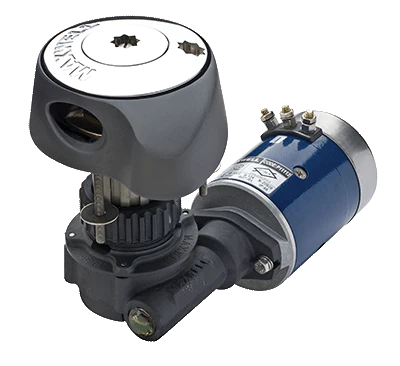Phil here, with a tech update on servicing and maintaining our Catalina 380, 38-foot sailboat. Boats of our size and larger have anchors that weigh on the order of 35 pounds and above, and have anchor rodes (i.e. lines) that are all chain. They are heavy. Thanks to gravity, anchors and chains are usually easy to deploy. However, it is difficult to retrieve them when it is time to pick up the anchor and sail away. That is where the electric windlass comes in.
Catmandu came with a very nice Maxwell Freedom 800 electric windlass, that has worked flawlessly for the past three years. However, last July when Kay and I were testing the boat’s systems at the dock in preparation for sailing south, the anchor windlass would. not. deploy.

We contacted our dear friend Mike Dillon, an engineer for Maxwell in Fort Lauderdale, for help. A new windlass costs about $2000, and I hoped we could repair ours instead of replacing it.
“When did you last service the windlass?” Mike asked when he came aboard with his bag of tools.
“You have to service anchor windlasses?” I replied. I had no idea. I thought they were magical devices that just worked for years when you pushed the buttons. They have shiny, stainless steel turny things on top and magical whirring things that are invisible below the deck.
It turns out you have to service anchor windlasses periodically. #Sad. It appeared that the windlass had not been serviced in over 20 years. Mike took apart the top part of the windlass and found that the two clutch halves had seized together, and that had prevented the anchor chain from deploying. We pried them apart with hand tools and brute force, cleaned out some embedded dirt, and greased the clutch. Then the anchor and chain deployed normally once again. Note to self: the user manual says the clutch has to be greased every year or bad things can happen.
Mike opened an access panel below deck and inspected the gearbox and electric motor. The gear box was empty when it should have been at least half full of 90 weight gear oil. All the oil had leaked out. Left empty, the gears would have eventually ground each other to dust and the windlass would be ruined. Mike was able to throw some regular oil into the gearbox so that we could get underway, and it was good enough for our cruise from Hollywood to Marathon.
Change the scene to the present day. Catmandu has been at a slip in Marathon for seven months, and properly servicing the anchor windlass has finally come to the top of the to-do list. Servicing involves greasing the clutch, removing the gear box, replacing all the oil seals, and replacing the gear oil. I was able to grease the clutch again. I even installed a “pressure arm” that presses the anchor chain against the chain wheel of the windlass since it was missing on my unit. However, after accessing the rest of the windlass below deck, the gear box would not come off. It had seized to the shaft and I could not get it off, even after applying penetrating oil daily, banging on it with a hammer, and applying heat from a heat gun.

The next best thing was to merely remove the bottom part of the gear box and the electric motor from the assembly while leaving the worm wheel and gear box cover on the shaft, as seen in the photo above. As you can see below, out of oil again.

Then I turned the gearbox to the side, and identified an oil leak past one of the oil seals. Oil seals are partly rubber and partly metal, and must seal the gearbox and shaft precisely in order to keep the oil in.

I bought a Maxwell rebuild kit for this windlass, which includes replacement oil seals, clips, o-rings, and a sight glass for the gear oil. I was able to get all the old seals out and replace them, except for the seal in the gearbox cover. Of course, there is a YouTube video for that.

I installed the new hardware and bolted the gearbox assembly back onto the windlass with fresh 90 weight gear oil. After applying anti-seize compound to the bolts, I secured the gearbox to the shaft and re-installed the electric motor.

To prove it works, I ran the anchor up and down at the dock a few times, and called it a success. Now, the anchor windlass has been completely serviced — except for greasing the worm wheel on the shaft and replacing the oil seal on the gearbox housing. Good enough, as long as they never have to come off.